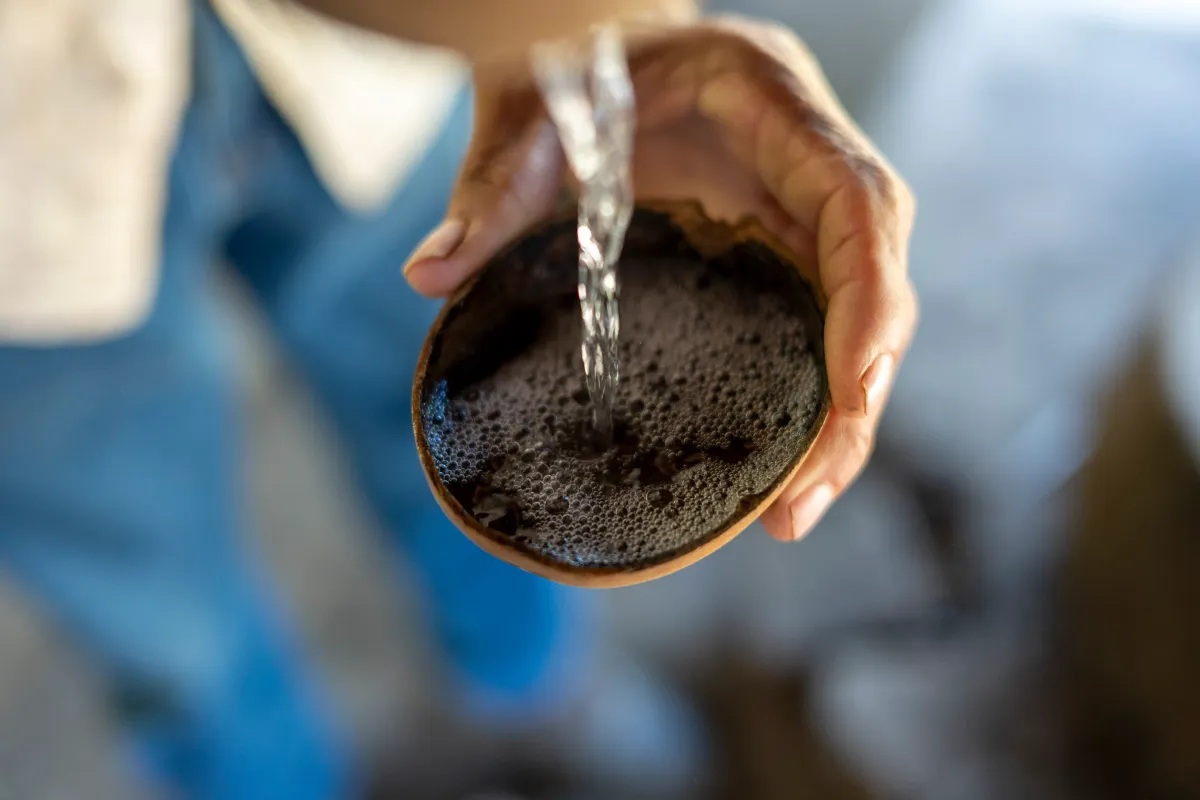Raicilleros, Philosopher Kings (Part 4)
On drinking a cultural landscape.

After visiting Don Adrián and Don Lupe - two old men, up in the hills, making some country hooch on their land - it’s easy to sip a little raicilla and be charmed by their pastoral existence.
To Arturo, we are living in the golden age of raicilla. There’s growing appreciation and awareness of the spirit, but the old heads, like Don Adrián and Don Lupe, are still at the helm, acting as guiding hands. At this point in time, the raicilla you drink from a taberna is one of the most pure, unadulterated spirits you’ll ever have. As Arturo says, "You’re drinking a cultural landscape.”
Raicilla was never meant to be a commercial activity - it was a drink made by farmers to be enjoyed with friends, family, and the local community. As such, the market has been able to regulate itself, since history and craft have been the dominant forces, not money.
But that’s all about to change. And soon.
Raicilla was granted a Denominación de Origen (DO) in 2019, defining its geographic origin and cultural significance. The Oficial Mexicana Norma (NOM) will follow, which is a set of regulatory standards that help activate and enforce the DO, such as specifying how and where the raicilla can be made. There’s a current proposal out and public discussion has been had, but the NOM hasn’t been ratified yet. However, as the new government takes hold in Mexico, it’s expected that the NOM will be put in place soon.
There’s palpable anxiety about what the DO/NOM will mean for raicilla. In its purest form, a DO (or equivalent) is supposed to defend traditional food products on the global market. But critics argue the DOs in Mexico, specifically the ones for mezcal and tequila, act more as marketing and promotional facilitators rather than protecting traditions and customs of their producers[1]. The emphasis of the DOs has been growth, especially in foreign markets.
Since wine is an apt comparison for agave spirits, it’s helpful to look at how other DOs and their equivalents have been implemented around the world. In France, a country less than one-third the size of Mexico by landmass, there are over 367 protected wine regions by the Appellations d'Origine Protégée (AOP)[2]. In Spain, there are 96 Denominación de Origen Protegida (DOP) regions and 42 Vino de la Tierra (VT) regions.[3]
Conversely, in Mexico, which is about twice the size of Spain and France put together[4], there are just five DOs for agave spirits covering about 1,225 distinct municipalities.[5] Additionally, tequila and mezcal are two of the largest DOs (or equivalent) by geographic area in the world.
Where I visited in Cabo Corrientes, there was a tremendous amount of diversity, both cultural diversity and biodiversity, within a few square miles. But if you expand beyond this small area, the breadth of agave spirits is even more impressive. In Jalisco alone, there are at least 10 different words used for the types of mezcal: raicilla, vino de cerro, vino de olla, vino de lechuguilla, tepe, tutsi, baranca, tequila, tuxca, and vino mezcal.
Those names have meaning and history - in the geography, in the agave, in the way it’s made, and in the ways the community consumed it. That meaning might not be obvious to foreigners, but it is to those living it. How can all of those be represented by a single DO?
Amidst all the impending regulation, people are taking sides on how exactly to grow the raicilla industry. A few years ago, a group of raicilla producers formed an organization called the Consejo Mexicano Promotor de Raicilla. They’re highly influential, but to Arturo, the group is too focused on growth and ignores the smaller producers.
“Of course we need to have business with others to grow and make money,” Arturo said while we were headed back to Vallarta, “but since we haven’t given attention to it, there’s space for others to enter and put their own standards on raicilla.”
There’s a natural tension forming between growth and protection. Folks like Arturo, and even myself, tend to want to protect or preserve what currently exists. After a few hours surrounded by the immaculate beauty of the agave-laden hills, how could you not want to protect it? But the truth is that raicilla has been constantly evolving and changing over time, and maybe we’re just entering into the next phase of raicilla’s existence.
Arturo told a story about some raicilleros he met a while ago. They were in the process of installing a machine that would help them smash the agave piñas after roasting, a task that has traditionally been done by hand with wooden mallets. When he asked why they would change the traditional way, they said something to the effect of “Arturo, you’re not the one breaking your back trying to crush these piñas every day.”
It’s a funny quip, but it’s true - this is hard fucking work. Who is to tell them to forego advancements in efficiency and growth? The raicilleros have the right to change and grow, in whatever way that means for them. They especially have the right to try and make more money.
So even for Arturo, it’s complicated.
“I didn’t grow up in the countryside, I don’t have a farm, I’m an architect,” Arturo told me. “I can’t pretend to be like them, that is false. I can’t protect this - it’s not even mine. So sometimes for me, it’s very hard to understand where I stand.”
But the worry is that regulation and industry will become the driver of change and growth, rather than being led by those living it. If there is going to be change, let it happen as naturally as possible at least.[6]
Why is this important? Why am I trying to bore you to death with talk about regulation?
With regulation - raicilla and otherwise - there are inherent decisions made about the voices being amplified and the ones that are ignored. These decisions are made through the definitions and language used in the legislation.
Inevitably there will be winners and losers. If you prioritize exportation and commerce, you emphasize producers with more resources and higher volume output, potentially crowding out smaller producers. There is a petition on change.orgopposing one proposal of the NOM. In it, the authors cite:
“Among academics, producers and culture enthusiasts around agave we find many gaps that put at risk the sovereignty, sustainability and authenticity of this legacy and that leave out of the value chain many low-resource families in the mentioned regions.”
The petition also cites part of the NOM where they define what agaves can be used to make raicilla. The language is vague and opens the door to producers using agaves that might not be native to the area or only growing the easiest, most productive agaves. The fear is that small producers and various species of agaves will be crowded out as the industry expands.
Who gets to tell the story? Who gets to make the decisions about the future? That’s the worry for raicilla right now.
That’s all on raicilla, for now at least. Thanks to Arturo, Don Lupe, and Don Adrián for their time, words, and of course their raicilla. And thanks to all of you for reading and following along!
Pulling back the curtains a little, I thought this was important because the question of who gets to tell the story is one of the more pertinent ones we collectively face right now. Decisions are constantly being made about who matters and who doesn’t. And for all of us in the United States, this question is going to be even more relevant for the next few months.
If I’m honest, raicilla is difficult to write about. As a writer and photographer, when you go into a country to learn about a significant piece of its cultural heritage, how we talk about and portray those experiences is fraught with landmines. Especially as a white dude and in a country where the U.S. doesn't exactly have the best track record. How do I genuinely talk about a subject without sounding like I'm “discovering” it? How do I make sure the right voices are being amplified? I think about these types of questions often, maybe too often, but it's because I deeply care about the people I meet and talk to. These are their stories, not mine. I'm just an idiot trying to learn.
Maybe intent is what matters? If we can improve the awareness and respect people have for the world, I think we’re on the right track.
Cheers,
Skylar
References
1 The folks over at mezcalistas.com write about this and provide their own perspectives https://www.mezcalistas.com/what-does-the-raicilla-denominacion-de-origen-say-about-the-state-of-denominaciones/ & https://www.mezcalistas.com/denominacion-de-origen/
2https://en.wikipedia.org/wiki/List_of_Appellation_d%27Origine_Contrôlée_wines
3 https://en.wikipedia.org/wiki/Spanish_wine_regions
4 France is 213,011 sq mi, Spain is 194,897 sq mi, and Mexico is 761,610 sq mi
5 https://es.wikipedia.org/wiki/Denominaciones_de_origen_de_México
6 Pedro Jimenéz Gurria, the owner of Mezonte, an agave spirits bar/educational center in Guadalajara, gave a really interesting talk about this subject, which you can listen to here:
